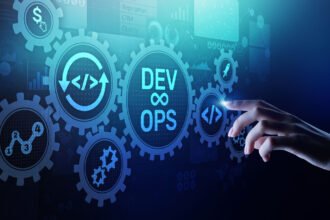
Predictive analytics / machine learning / artificial intelligence is a hot topic – what it’s about?

Predictive analytics / machine learning / artificial intelligence is a hot topic – what it’s about?
Using algorithms to help make better decisions has been the “next big thing in analytics” for over 25 years. It has been used in key areas such as fraud the entire time. But it’s now become a full-throated mainstream business meme that features in every enterprise software keynote — although the industry is battling with what to call it.
It appears that terms like Data Mining, Predictive Analytics, and Advanced Analytics are considered too geeky or old for industry marketers and headline writers. The term Cognitive Computing seemed to be poised to win, but IBM’s strong association with the term may have backfired — journalists and analysts want to use language that is independent of any particular company. Currently, the growing consensus seems to be to use Machine Learning when talking about the technology and Artificial Intelligence when talking about the business uses.
Whatever we call it, it’s generally proposed in two different forms: either as an extension to existing platforms for data analysis; or as new embedded functionality in diverse business applications such as sales lead scoring, marketing optimization, sorting HR resumes, or financial invoice matching.
Why is it taking off now, and what’s changing?
Artificial intelligence is now taking off because there’s a lot more data available and affordable, powerful systems to crunch through it all. It’s also much easier to get access to powerful algorithm-based software in the form of open-source products or embedded as a service in enterprise platforms.
Organizations today have also more comfortable with manipulating business data, with a new generation of business analysts aspiring to become “citizen data scientists.” Enterprises can take their traditional analytics to the next level using these new tools.
However, we’re now at the “Peak of Inflated Expectations” for these technologies according to Gartner’s Hype Cycle — we will soon see articles pushing back on the more exaggerated claims. Over the next few years, we will find out the limitations of these technologies even as they start bringing real-world benefits.
What are the longer-term implications?
First, easier-to-use predictive analytics engines are blurring the gap between “everyday analytics” and the data science team. A “factory” approach to creating, deploying, and maintaining predictive models means data scientists can have a greater impact. And sophisticated business users can now access some the power of these algorithms without having to become data scientists themselves.
Second, every business application will include some predictive functionality, automating any areas where there are “repeatable decisions.” It is hard to think of a business process that could not be improved in this way, with big implications in terms of both efficiency and white-collar employment.
Third, applications will use these algorithms on themselves to create “self-improving” platforms that get easier to use and more powerful over time (akin to how each new semi-autonomous-driving Tesla car can learn something new and pass it onto the rest of the fleet).
Fourth, over time, business processes, applications, and workflows may have to be rethought. If algorithms are available as a core part of business platforms, we can provide people with new paths through typical business questions such as “What’s happening now? What do I need to know? What do you recommend? What should I always do? What can I expect to happen? What can I avoid? What do I need to do right now?”
Fifth, implementing all the above will involve deep and worrying moral questions in terms of data privacy and allowing algorithms to make decisions that affect people and society. There will undoubtedly be many scandals and missteps before the right rules and practices are in place.
What first steps should companies be taking in this area?
As usual, the barriers to business benefit are more likely to be cultural than technical.
Above all, organizations need to make sure they have the right technical expertise to be able to navigate the confusion of new vendors offers, the right business knowledge to know where best to apply them, and the awareness that their technology choices may have unforeseen moral implications.






